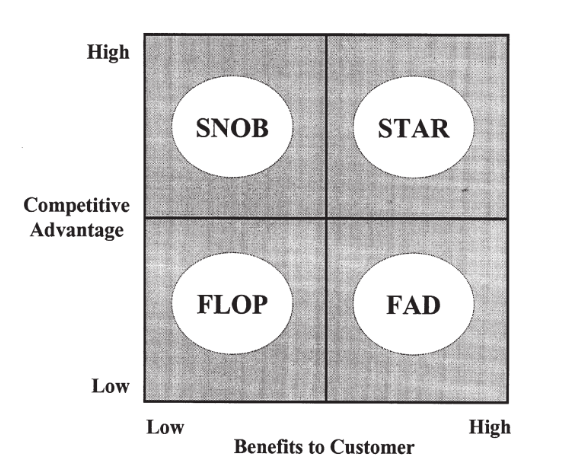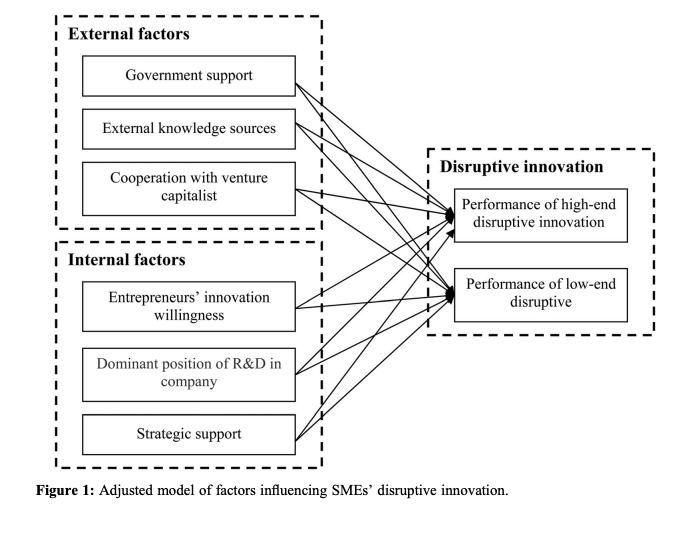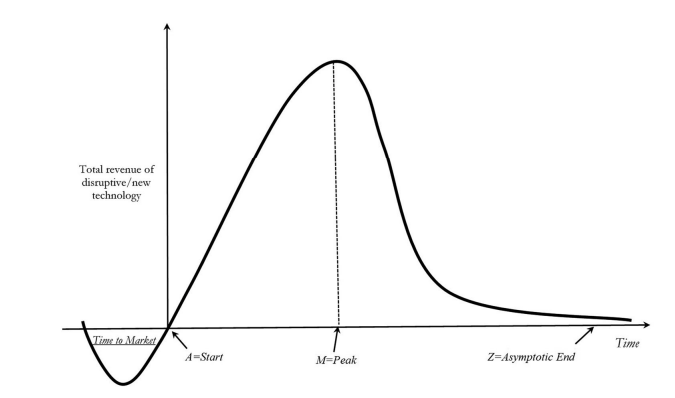Case Study: Geely’s Acquisition of Volvo
On Building a Reputation
Geely is a Chinese automobile carmaker that first began as a manufacturer of appliances. The firm entered the market as China was on the lookout to promote domestic auto manufacturing. The aim is to reduce the country’s reliance on imported auto products and to be able to compete in the global market.
Chinese auto manufacturers often face difficulties in entering global markets because they are unable to compete with the designs of western competitors. It was deemed to lack innovation in terms of its design and would even infringe on intellectual property rights. Moreover, Chinese automobiles often had problems with safety and durability that damage their reputation in the international market.
Geely responded to these challenges by placing a focus on research and development within their firm. For Geely to gain a competitive advantage, they placed an emphasis on developing energy-efficient auto components for their vehicles. They invested heavily in training local engineers and established centers for education to master the technology that they want to achieve. Geely was known to be a low-cost provider in order to penetrate the market. However, this was not profitable in the long run, therefore, they entered the middle to high-end automobile market.
The firm avoided entering into joint ventures with foreign companies. The hesitation was rooted in the limitations in decision-making in Geely’s activities. However, Geely was still on the road to entering international markets and expanding its operations outside of the country. These successful partnerships was providing countries with public utility vehicles such as buses and taxis.
The Acquisition of Volvo
Eventually, Geely acquired Volvo Car Corporation with the intention of improving Geely’s technology to be able to enter markets that Geely was previously unable to. Volvo’s reputation revolves around being able to offer the market high-end luxury cars. Another aspect that Geely hoped to understand better in terms of technology and branding. However, Volvo also faced its own challenges such as long-term profitability, and this was one of the problems Geely was eager to overcome.
Geely’s goal was now to increase sales in Europe and North America while building its brand to gain market share in China. This acquisition meant that investments in production capacity, advertising, and brand building were made. This alliance came with its challenges as it is a cross-border acquisition that comes with different management styles, objectives, resources, and cultural differences. However, these were addressed by giving each company autonomy in their decisions but encouraged a synergy that allowed for technology and knowledge transfer.
Despite these challenges faced by Geely, this acquisition was proven to be successful as it resulted in an increase in profits and market share, locally and internationally. Volvo was also able to become profitable after years as the acquisition allowed it to enter the Chinese market.
Geely’s acquisition of Volvo presents itself as a success story of how technology firms are able to leverage research and development in creating a competitive advantage. To further analyze this acquisition, I will be articulating the management of research and development concepts that are able to address Geely’s ability to manage risks, gain competitive advantage through research and development efforts, and the strategic acquisition of Volvo.
Effectively Doing Research and Development
Activities in research and development are driven by the need to innovate. As businesses are often fighting for their place in the market, research and development allow them to screen opportunities and create innovative solutions.
According to Boer’s Industrial R&D Process (1999), research is done in order to avoid repeating the same thing and to be able to identify important issues faced by the firm. It is an interconnected effort among researchers, engineers, marketers, and managers. However, entering into a new project comes with its own risks. Therefore it is important to ensure that risks are managed. He states that there are key principles to abide by in managing risks: 1) If uncertainties are high, keep the stakes low; 2) As uncertainties decrease, the relative amounts at stake may be increased; 3) Make incremental decisions and avoid all-or-nothing gambles; 4) Be willing to pay for the information required to reduce the risk; 5) Create a process with an abundance of exit points.
In the process of research and development, a point was made that there is a need for managing people and resources in order to reduce risks. In the paper presented by Pavitt on Research and Development (2001), he states that the dynamics of capitalist competition is s stimulant in the development of innovative activities. The growth in knowledge and innovation comes with competition. Moreover, the creation of knowledge capital is an important factor in the growth of a firm. Research and development are driven by a supply of scientists and engineers. This brings an emphasis on government entities to continuously support researchers to open opportunities. A high priority in research and development has sped up modernization in industries and influences the performance and productivity of a country.
According to Mikkola on the subject of Portfolio management of R&D projects: implication for innovation management (2000), when developing an R&D portfolio one can refer to the R&D Project Portfolio Matrix. This matrix aims to be a tool by correlating the competitive advantages of a firm against the benefit it may have to customers. It is composed of four quadrants consisting of STAR, FLOP, FAD, and SNOB.
STAR are those projects that have a high competitive advantage and high benefits to customers. Those within the FLOP quadrant are projects that have a low competitive advantage and low benefits to customers. R&D projects that are considered SNOB hat are projects that are high in competitive advantage but have low benefits to customers. FAD are projects that have a low competitive advantage but high benefits to customers.
The challenge for projects that fall under SNOB are projects that have a poor perception to customers. Therefore, these projects are best to focus on branding and building a reputation among customers in order to increase the perceived benefits. This would then result to moving the project from SNOB to STAR. Sustaining STARs are meant to be difficult to sustain and are costly, but offers high rewards for businesses and can often lead to improving cost compared to competitors. Transforming FAD projects into STAR projects is best done when customers are able to witness such improvements in the project on their own. When a FAD project is no longer able to address customer needs, this could eventually lead to a FLOP project. Moving FLOP projects into STARs is a difficult task thus firms often abandon or pull the plug for such projects.

The R&D Project Portfolio Matrix
Finally, to understand the strategic alliance of Geely, I will be referring to Narula’s Globalization and Trends in International R&D Alliances (2004) which elaborates on choosing international or domestic partners for research and development activities.
According to Narula, the foreign component of R&D alliances has varied significantly due to the globalization of businesses and competition. Alliances formed between large and small countries present different dynamics when it comes to research and development. Such as how small countries often would engage with large countries to improve their activities given that resources can be limited and can be found elsewhere at a lower cost. These alliances also energize competition in countries where the partnerships would take place.
Narula continues that firms would choose to partner with international firms than domestic firms because of supply and demand issues. Research and development activities are said to adapt to specific market conditions which are often influenced by the inability to meet demand in the home country. By utilizing a location outside of its home country, a firm presents itself with opportunities to enter new markets and make use of new technologies.
One of the more prevalent trends is the emergence of technological sectors and the crossover of these sectors allows for an increase in competencies within the industry. The engagement of these networks allows firms to utilize assets that may not be readily available in their country of origin. Even if the firm has proven itself capable in a specific area of expertise, there is still a growing need to improve its competencies to improve competitiveness and increase innovation. It is a given that the presence of globalization has driven firms to create strategic alliances to improve one’s operations.
To further discuss the role of research and development in disruptive innovation and market launching, Chen et al. (2017) presents a framework that states the factors that influence high-end and low-end disruptive innovation in the context of Chinese SMEs (or Small to Medium Sized Enterprises).

The external and internal factors that influence high-end disruptive innovation are the following: government support, external knowledge sources, and strategic support. The factors influencing low-end disruptive innovation are cooperation with venture capitalists, external knowledge sources, the dominant position of R&D, and entrepreneurs’ innovation willingness. The paper acknowledges that networks impact one’s capability for radical innovation. However, disruptive innovation is said to demand a firm differently such as a change in organizational structure that is independent and flexible. With an emphasis on product development, research and development can assist the firm in highlighting its technical advantages that could lead to disruptive innovation.

Proposed Framework on Generating Disruptive Innovation
Another framework for identifying the disruptive potential of innovation is presented by Rashool et al. (2018) which considers the development of disruptive innovation a dynamic process. Disruptive innovation focuses on new markets and customers by introducing new technologies that will affect markets in the long term. This framework guides firms to create ideas that have disruptive potential. With a focus on market observation, this can increase the disruptive potential index of an innovation project which is characterized by performance, potential market impact, ease of customer learning, future development potential, and mainstream customer focus. These projects can begin in the low-end market but can also penetrate the market by offering products with features and functionalities of high quality. However, it should be noted that It will take time for these innovations to disrupt the market.

Technological Cycle
According to Coccia (2020), disruptive innovation is a powerful force in generating technical, economic, industrial, and social change. Here, he discusses the empirical findings that suggest factors that can expand disruptive innovation theory. He elaborates that there is disproportionate growth when it comes to disruptive technology in markets compared to established technologies. Also, the technological cycle of disruptive technology has an asymmetric shape of the technological cycle. His methodology allowed for a visualization of disruptive technology which can provide a guide in understanding technology and its level of disruptiveness. His findings show that disruptive technology has technological advances of its own that allowed it to dominate mainstream or established technologies in markets.
Given these concepts and frameworks, I would be returning to Geely and their acquisition of Volvo and how they were able to manage their risks, made use of research and development to gain a competitive advantage in local and international markets, and analyze their strategic acquisition.
It has been previously elaborated that Geely is able to find success in the Chinese car market and eventually in the international market. I would attribute this to their ability to manage the risks that were presented to them such as how entering a market that’s dominated by foreign competitors and how they were a late entrant into the industry.
By identifying that there is a lack of local manufacturers but the assets that will allow them to enter the market, they were able to find a place in the industry. This comes with being able to make careful decisions in entering the market. Such as how they entered as a low-cost provider. Manufacturing these cars while having a low-profit margin is the price to pay in order to enter a new market. Given that they are offering nothing new but rather a low-cost alternative, they began with a low-end market with barely any innovation. However, as they eventually found their footing in the market, it must be noted that it is also made possible due to government support and policies.
With their local government supporting local manufacturers, this then created a space for competition and a strong interest in national development. This mindset was aligned by Geely themselves. By holding off on joint ventures with foreign companies, they were able to focus on training local engineers and improving their knowledge base.
Given they are able to improve their knowledge and human capital, this gives Geely the opportunity to diversify its product line. This came with its own failures. Given the framework presented by Mikkola (2010), they found themselves with a STAR that eventually turned into a SNOB when entering the luxury car market. This market posed potential but it failed to communicate to its customer in the domestic market. Given the acquisition of Volvo, known for its luxury cars and brand, this is one of the opportunities that Geely took when looking into Volvo in order to sustain its luxury car offering.
Geely acquiring Volvo is more than being able to enter a market segment focused on luxury cars, but rather identifying that the technology that they hold fails to be disruptive. Before the acquisition of Volvo, Geely had made efforts to improve energy efficiency and move towards environmental protection. These technologies were developed in-house and with the resources readily available to Geely. However, in comparison to Volvo, Geely appears to be behind in this technology. Volvo has established a brand for itself in being safe and durable while meeting the standards of the U.S. and of Europe. Indicating a standard for energy-efficient vehicles.
Moreover, it is strongly suggested that the acquisition is driven by globalization. The market in China can appear to be limiting for a local manufacturer. This is why an opportunity to enter international markets and conduct technology transfer through international alliances is invaluable.
The alliance between Geely and Volvo is one that I did not really expect to succeed as Volvo also finds itself in a difficult position to earn revenue. However, by leveraging its research and development department, it is able to assist Geely in creating auto components that are more energy efficient. In turn, this alliance became an entry point for Volvo in turning its product offerings outside of FLOPs. The alliance between these two carmakers presents opportunities for disruptive innovation. Geely already has a grasp of the Chinese market and how to be a cost leader in the market, while Volvo is able to share its standards and technologies that may be otherwise not available in China.
Overall, the acquisition of Volvo by Geely is one that showcases how the management of risks can lead to opportunities that allow for alliances that can give staying power in the industry. It takes time, money, and a deep understanding of the context that can allow for opportunities for competitive advantage as well.
References:
Boer, F. Peter (1999), "The Industrial R&D Process," in The Valuation of Technology: Business and Financial Issues in R&D. New York: John Wiley & Sons. Chapter 2, pp. 21-44
Chen, J., Zhu, Z., & Zhang, Y. (2017). A study of factors influencing disruptive innovation in Chinese SMEs. Asian Journal of Technology Innovation, 25, 140 - 157.
Coccia, M. (2020). Asymmetry of the technological cycle of disruptive innovations. Technology Analysis & Strategic Management, 32, 1462 - 1477.
Mikkola, Juliana H. (2001), “Portfolio Management of R&D Projects: Implications for Innovation Management,” Technovation 21(7), 423-435. Downloaded May 2009 from: http://www.scribd.com/doc/7311890/Portfolio-management-of-RD-projects-implications-for-innovation-management
Narula, R., & Duysters, G. (2003). Globalisation and trends in international R&D alliances. Journal of International Management, 10, 199-218.
Pavitt, Keith (2001), "Research and Development." Downloaded May 2009 from: http://www.sussex.ac.uk/Units/spru/publications/ imprint/sewps/sewp44/sewp44.pdf
Rasool, F., Koomsap, P., Afsar, B., & Panezai, B.A. (2018). A framework for disruptive innovation. Foresight.